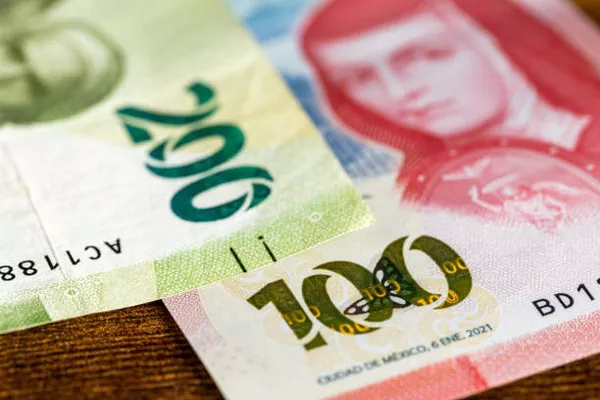The Mexican Peso traded flat or lower against major currency pairs on Monday.
Concerns about global growth and the Fed’s reluctance to lower borrowing costs dampened market enthusiasm and weighed on the Mexican Peso.
USD/MXN remains in a correction within a short- to medium-term uptrend.
The Mexican Peso (MXN) traded flat or lower against major currency pairs on Monday as sentiment was subdued and commodity prices sold off on global growth concerns. As a “risk-on” currency, the Peso took some hits accordingly.
At the time of writing, one US dollar (USD) buys 18.47 Mexican Pesos, EUR/MXN is at 19.77 and GBP/MXN is at 23.41.
MXN Lower on Global Outlook and Fed Caution
The Mexican Peso started the new trading week slightly bearish as global growth concerns intensified. The contraction in China’s official manufacturing data for May and a drop in commodity imports due to rising prices were partly to blame. However, the U.S. Federal Reserve (Fed) took a cautious stance at its meeting on Wednesday, apparently in no rush to lower borrowing costs, further weighing on overall market sentiment.
Mexico’s central bank will step in to support the peso if volatility becomes too “extreme,” said Victoria Rodriguez Ceja, the governor of the Mexican central bank.
Political risks also continue to pose background risks to the peso. Investors are concerned about the victory of President-elect Claudia Sheinbaum and her left-wing coalition Sigamos Haciendo Historia (SHH) in the June 2 elections. SHH won a supermajority in Mexico’s House of Representatives and two seats in the Senate. This will give it a mandate to push for radical amendments to the constitution that have unsettled markets.
The sell-off was exacerbated by rising bullish bets on the Mexican peso since it began a long upward trend in 2020. The relatively high interest rate of 11.00% set by the Mexican central bank to control inflation has been a major factor attracting investors seeking returns. This is especially true for carry traders, for example, who borrow in low-interest currencies like the Japanese Yen (around 0.0% -0.1% in April) and then invest in higher-return currencies like the Mexican Peso (around 11.00% in April), earning the difference.
Jason Tuvey, deputy chief emerging markets economist at Capital Economics, told FXStreet: “Before the election, we had argued for some time that the peso looked increasingly overvalued and vulnerable to significant declines – the declines of the past few weeks have brought the peso close to our long-standing year-end forecast of 19.00 (USD/MXN).


